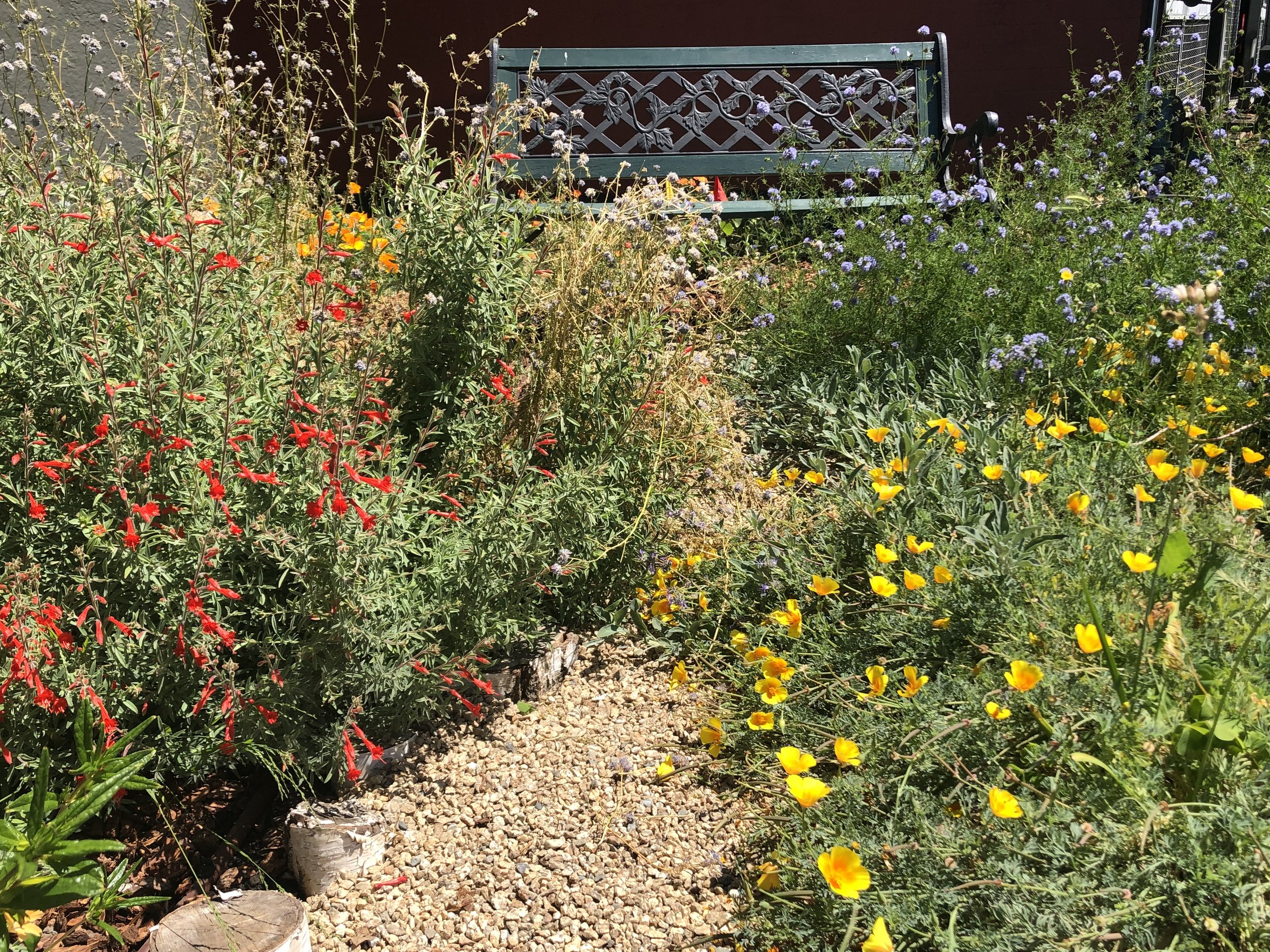Donna Bodine BeeLand Farms
El Cerrito, CA
Emerging Professional Designers
Donna Bodine
During the early onset of the pandemic, I decided to end my career as an environmental scientist working in private consulting and start my second career pursing my longtime passion for California native plants and urban farming. In May 2020, my new landscape design business was announced during the virtual Bringing Back the Natives Tour, a tour of native gardens in Alameda and Contra Costa Counties. My own garden has been featured many times since 2011. And so I began designing landscapes consisting only of California native plants and/or areas to grow fruits and vegetables. One of my main goals is to integrate these two components in a way that creates a long-term healthy, productive, and water use efficient environment for the people who use the space as well as key wildlife species such as our native bees. Locating native plants near food crops is a key strategy for integrated pest management for organic gardening because natives attract beneficial insects that prey on insects that damage crops. And of course, choosing the right native plants will bring many species of native bees to the garden. Native bees are better pollinators than honeybees and their presence improves the quality and quantity of urban farm produce.
Festuca californica looks lovely with Diplacus longiflorus and Achillea millefolium ‘Red Velvet’, which provide a nice textural contrast.
My first design project was a sloped median along historic public pathway in the Berkeley hills. Inspired by the natural setting, I created a Coast Live Oak woodland inspired design plan, drawing on plants that are part of the natural oak woodland community and often grow on slopes. My client lives next to the pathway and implemented the project as a volunteer opportunity. She wanted a variety of leaf textures, pollinator-friendly flower colors, and plants that would extend the blooming season as much as possible. Key plants I included in the design were:
Arctostaphylos densiflora 'Howard McMinn' (Manzanita)
Achillea millefolium (Yarrow)
Diplacus grandiflorus (Monkeyflower)
Eriogonum latifolium (Coast Buckwheat)
Penstemon heterophyllus (Foothill Penstemon)
Triteleia laxa (Ithuriel’s Spear)
Wyethia angustifolia (Narrowleaf Mule Ears)
A coastal section of Eschscholzia californica, Epilobium canum, and Gilia capitata are mixed to create an informal garden perfect for relaxing and watching wildlife.
Based on feedback received, this public space is enjoyed by local members of the community who visit to learn about native plants. The project appeals to people of all ages!
Native plants observed while hiking at Mount Diablo. My designs are inspired by what I see in nature.
My design inspiration comes from decades of hiking and backpacking in natural areas all over California. I have always enjoyed identifying natural plant communities, identifying how and where native plants grow with considerations such as soil texture and slope, and how native plants prefer to combine and lay themselves out. I’ve spent many hours just staring at plants from different perspectives and under different lighting conditions. I then try to incorporate these observations into a landscape design at an appropriate scale for the garden. I draw upon local native plants as a foundation for the design and then add plants native to other parts of California including cultivars, if appropriate. In doing so, my designs have diversity but also group an appropriate number of each pollinator-attracting plant to look natural and make it easier for bees to efficiently obtain pollen and nectar. For example, I’ll plant a mass of Penstemon heterophyllus that ultimately covers about 20 square feet in area. The bees can conserve their resources by getting pollen and nectar without having to search far and wide for the right plants.
Another service I offer is coaching hands-on gardeners who want to design their own native landscapes and urban farms. I help clients envision how the outdoor space will be used, identify opportunities and challenges, find creative solutions for challenges, review and refine landscape design plans and assist with laying out plants, and provide guidance on how to select the right plants for the design. I help clients develop a schedule for project phasing as part of a longer-term vision. I advise on how schedule projects for cost effectiveness and maximizing the value of the landscape. I truly enjoy working with clients who are so invested in their landscapes.
I’m thankful for the opportunity to reinvent myself and follow a new career path. I hope my designs will help my clients and all who visit or view the garden feel more connected to California landscapes, which are unique in their subtle beauty.



